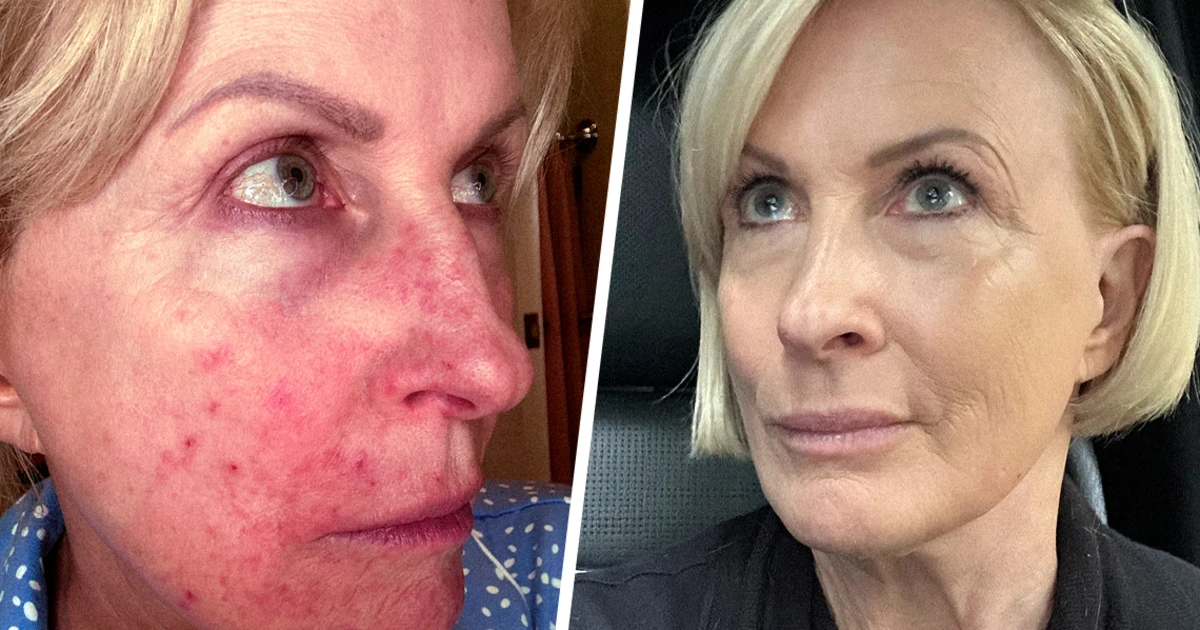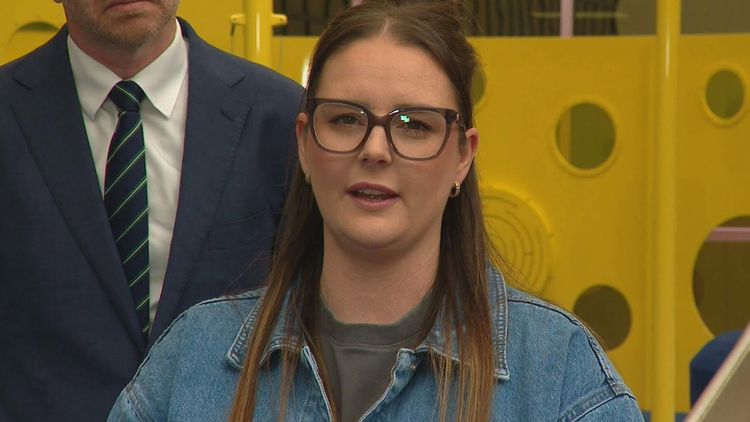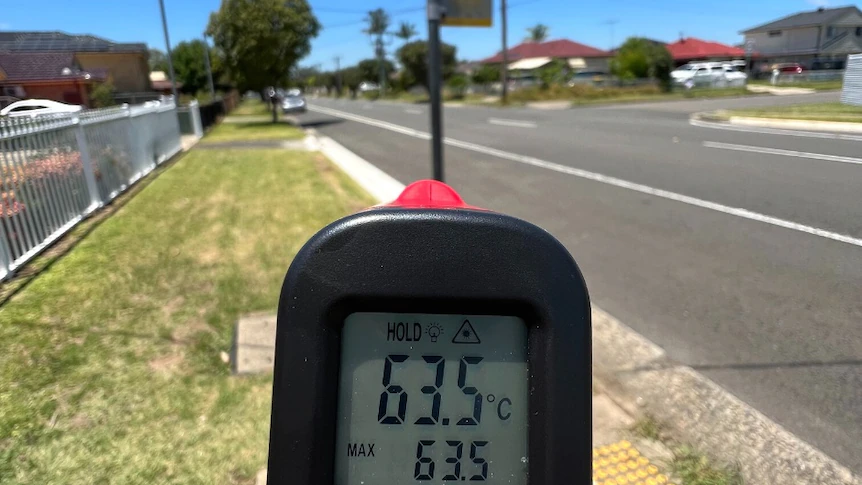
This article was produced in partnership with Air Mail.
When you work in television, heavy makeup isn’t optional — it’s part of the job.
I’ve always had sensitive skin, and for the past few decades — seconds after the cameras turned off — I’d sprint to the bathroom and scrub it all off. My face would itch, burn and feel raw. It was annoying, but I figured that’s just the price of beauty and the industry I work in.
Two decades ago, the situation started to escalate, especially during spring and summer. My eyes felt like pins were being jabbed in them. The itching was unbearable. But I assumed it was just “seasonal allergies,” and I took every allergy medicine on the market.
And this summer, things took a dramatic turn. I broke out in angry hives. The feeling of jabbing pins moved from my eyes to random spots all over my body — from my scalp, to the back of my knees, to my toes. Everywhere.
My face looked grotesque. Oozy, red welts. Rash-like bumps. Pimples. Hives. The itching was unbearable, and it felt like bugs were crawling across my skin 24/7. I didn’t want to leave the house, let alone walk into a television studio. I couldn’t imagine putting on more makeup.
It was starting to impact my mood and patience.
It got so bad, I couldn’t do my job. I felt distracted by the severe itching and feeling of sharp pins and needles. As I was reporting the news, all I could think about was how it felt like bugs were crawling up my face. I wanted to rip my skin off.
I couldn’t exercise. The sun felt like I was being scalded, and the feeling was constant. I couldn’t sleep well — and I ended up having to take time off to figure out what was wrong.
I was referred to Dr. David Cohen, professor of dermatology and an authority on contact dermatitis at NYU Langone Health. NYU was the first center in the United States to perform patch testing in 1930, and Dr. Cohen has since led efforts to refine the method, including work on standard test panels and more flexible testing schedules.
After extensive patch testing, he told me I’m allergic to three ingredients found in many beauty products: methyldibromoglutaronitrile, propolis, and dehydroabietyl alcohol.
While those three ingredients aren’t considered toxic, they trigger allergic reactions in me.
Upon the advice of my daughter, Emilie (who has been concerned about finding safe products), I reached out to the Environmental Working Group — a nonprofit that researches the safety of consumer products — to analyze more than two dozen lotions, serums, cosmetics and creams I was using almost every day.
The results floored me.
More than half contained what the group classified as “unacceptable” ingredients — ones linked to allergies, cancer, reproductive toxicity, with some products even banned in other countries. These weren’t obscure bargain-bin items. They were popular, well-marketed products I’d trusted for years.
“Women use dozens of personal care products assuming they are safe to use every day,” Jocelyn Lyle, executive vice president of mission and partnerships at the Environmental Working Group told me.
“Most people are surprised to learn that many cosmetics and other personal care products sold in the U.S. can contain chemicals linked to serious health concerns like hormone disruption, allergic reactions and even reproductive harm,” Lyle added.
It was a wake-up call.
For decades, I’d slathered on whatever promised miracles: expensive creams Joe gifted me, trendy serums claiming to erase wrinkles, potions boasting “all-natural” magic. In reality, I was loading my skin with chemicals that may have been making me sick.
Two weeks ago, upon the advice of a specialist, I stopped using the three ingredients and my symptoms started to slowly subside.
Here’s the problem. Those ingredients — or similar compounds — are in almost everything I use. That includes eyeliner, mascara, eyeshadow, blush, foundation, concealer, powder, hairspray, root boost, mousse, shampoo, deodorant, lotions, oils, laundry detergent, soap…
The list goes on and on. Meaningful change is taking a lot of learning and researching.
There are alternatives. Today, I use an app, SkinSAFE, where I can input my patch test results and scan products to make sure they are safe for me. By the way, when I did that, I realized I literally had to replace everything, including household cleaner, soap and laundry detergent.
In the past two weeks, I have dramatically changed my routine. I now just use three products on my face— max. No more bathroom shelves overflowing with jars and bottles. No more chasing the next miracle cream.
And the changes are coming. It appears that my skin is slowly healing. The hives are gone. I still have itching on my body, so there’s obviously more work to do. I’m currently researching laundry detergents and headed back to the doctor to have more conversations about how to have a healthier relationship with the products I use.
And for the first time ever , I am consciously or perhaps “self-consciously” wearing no make up as much as possible.
Here’s my message to women: Stop the slather. Don’t be seduced by TikTok trends or glossy Instagram reels. Read the ingredients — whether it’s a $12 moisturizer at CVS or a $300 serum at a high-end boutique. Chances are, you are coating your skin with dangerous chemicals that can do real harm over time.
Pamela Anderson may be onto something with her no-makeup look. At first, it felt radical, even shocking, to see her barefaced on a red carpet. But maybe it shouldn’t. Maybe that’s what good health looks like. Maybe that’s beauty, showing up as yourself, instead of wearing a dangerous mask of chemicals.
What shocks me most is how casually companies minimize the value of our health just to sell us their products. Keep in mind, beauty and household products in the U.S. are loosely regulated compared to other countries.
I have a long way to go in figuring out what’s going on with my skin, but this feels like the first big step in years to feeling better.
And to me, that is beautiful.



